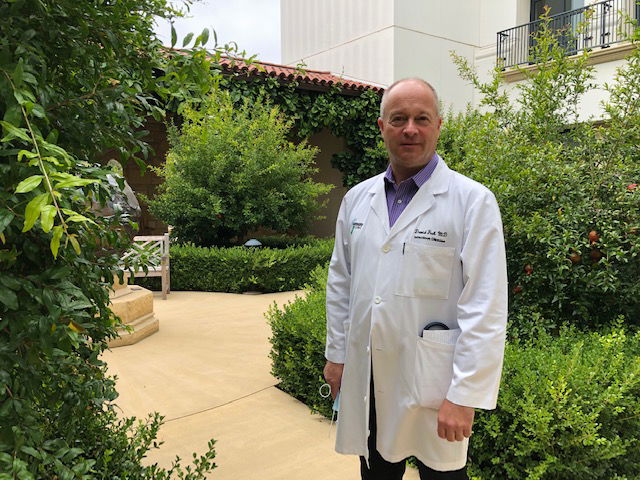Santa Barbara County nearing COVID test rationing
SANTA BARBARA, Calif. - A growing number of false negative COVID-19 test results and the potential for test rationing are the latest challenges during the pandemic.

“The biggest problem by far with testing for COVID in general, is false negative tests,” said Dr. David Fisk. “Meaning, that somebody actually has the virus but the test doesn’t pick it up.”
Fisk is an Infectious Disease doctor with Cottage Health and Sansum Clinic and has spent months in the trenches with COVID-19 patients, along with his colleagues. Fisk met up Thursday with NewsChannel reporter Beth Farnsworth outside Cottage Hospital.
He said a growing number of false negatives is putting a strain on resources, requiring re-testing at local hospitals and medical facilities.
“With the molecular or PCR test that’s available, that rate is roughly 1 in 4, maybe a little higher than that,” Fisk said. “Tests performed will be falsely negative and miss the presence of the virus within somebody’s body. By contrast, the false positive results are very infrequent."
Fisk said a shortage of testing supplies for the widely used PCR or molecular nasal test is also concerning.
“Our lab, literally day by day, is exerting every effort it can and turning over every stone possible to obtain supplies from any possible source to keep the availability of these tests coming. And so test limitation is a very significant concern. It's not guaranteed that we’ll continue to enjoy the access to the test we have now, even within the hospital system."
The shortage of supplies is happening across the nation.
“It’s not so much limits on the swabs that you put up someone’s nose to obtain a sample, it’s more limit on the chemicals that are used in the lab to actually process that sample once you have the swab obtained,” Fisk said.
He believes creating a national system to improve the supply chain is the solution.
“Most of these are chemicals that are available widely from different sources but the way that they’re used within the certain tests are restricted to patents held by the companies that have developed the tests. So, there are problems within these supply chains based on which chemicals are approved to use for a given manufacturer.”
Meantime, Fisk also shared some potentially promising news: A new at-home antigen test is expected to increasingly roll out in the coming months. It’s touted as “very accurate” when it has a positive result and detects the virus. However, the test’s negative reading does not definitively rule out the presence of the virus.
“The closest analogy to the antigen test is like the pregnancy test -- it’s a little handheld device and lines appear on it when the antigen is positive and it can be used for someone to self collect at home so it has big advantages in that regard.”
Fisk said the antigen test will be a helpful “fill-in” when other tests run short in supply.
